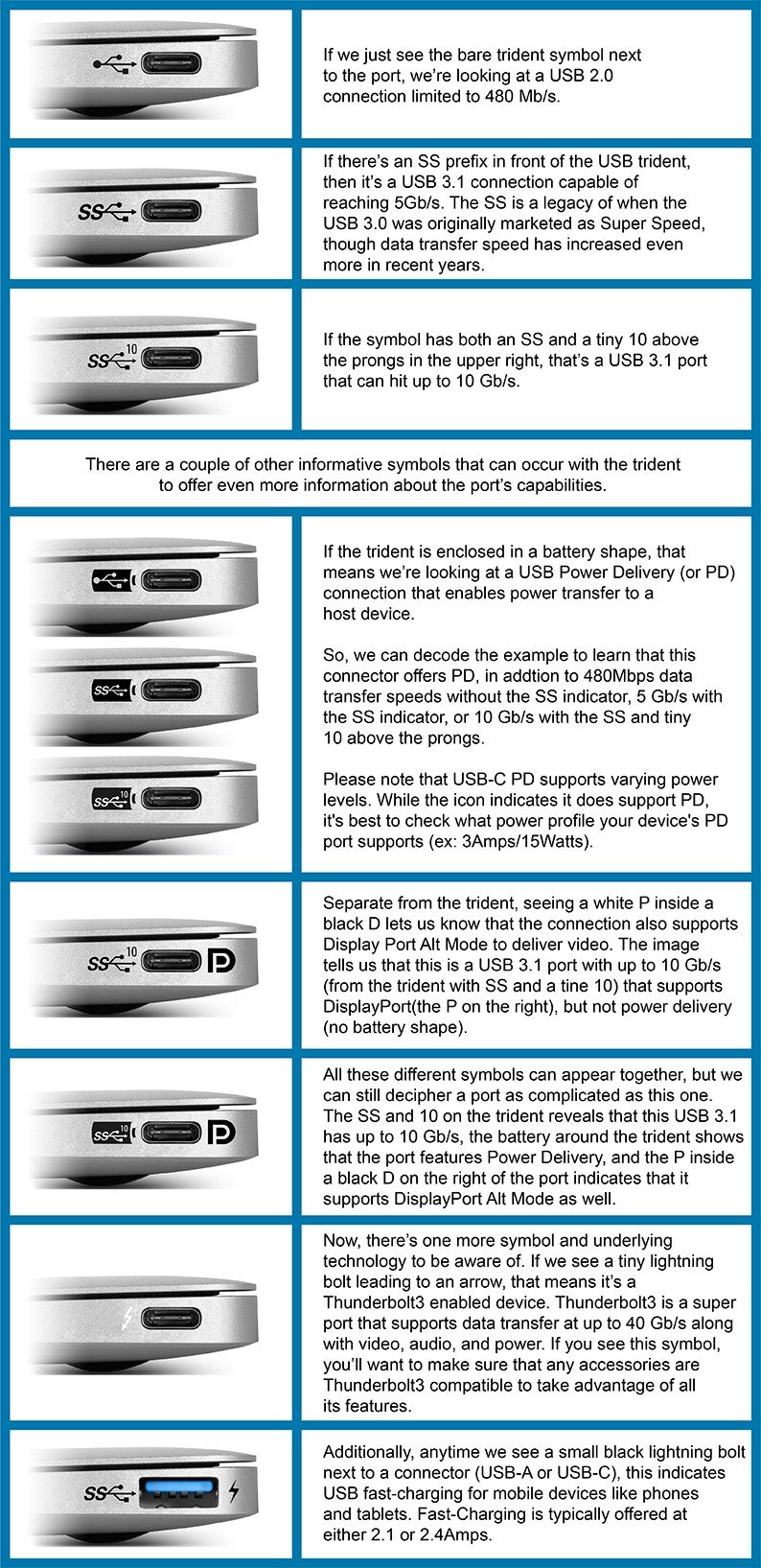this post was submitted on 09 Sep 2024
1597 points (97.4% liked)
Technology
60131 readers
3681 users here now
This is a most excellent place for technology news and articles.
Our Rules
- Follow the lemmy.world rules.
- Only tech related content.
- Be excellent to each another!
- Mod approved content bots can post up to 10 articles per day.
- Threads asking for personal tech support may be deleted.
- Politics threads may be removed.
- No memes allowed as posts, OK to post as comments.
- Only approved bots from the list below, to ask if your bot can be added please contact us.
- Check for duplicates before posting, duplicates may be removed
Approved Bots
founded 2 years ago
MODERATORS
you are viewing a single comment's thread
view the rest of the comments
view the rest of the comments

The USB standards are just... Comically overcomplicated. And almost everything about it is optional. They need a full revamp, making it simpler and mandatory on all future ports, devices and cables.
But they won't do that, will they.
Almost everything about it needs to be optional because sometimes USB is used to charge some cheap battery powered thing and sometimes it’s used to make a backup of a harddrive and sometimes it’s charging my laptop with enough power for it to be rendering video but still have a net charge increase to the battery while also providing Ethernet, video output, and keyboard/mouse input over the same one port.
EDIT to make it more clear why the variability of USB standards is what it is, compare a modern laptop to one from 10 years ago.
The older laptop has:
The newer laptop has:
The perhiperals, however, don’t support all of the features. They only support the features they actually use. As long as the laptop supports all of the optional features, you don’t need to worry about it.
The is especially helpful for less technical users who may not want to know what the difference between HDMI and DisplayPort is. With a fully USBC based laptop and USBC perhipals you can just plug it in and it will work.
Of course this is all dependent on the laptop implementing all of the extra features, which is still only really true of more expensive laptops.
There should be a way to make it simpler.
Idk, something like "for USB 4 you NEED all of these".
Or maybe USB 4 with levels like bronze, silver, etc.
Or make displaying data rate, display and charging capabilities all mandatory on all ports...
I'm not sure what, but "it's a USB port; look in the manual and if you're lucky you might learn what it does exactly" ain't it.
People do not want to be limited to 1m long cords or only have thick and stiff Thunderbolt3 cords with 20 different conductors for a wired mouse.
Minimum specs like you are proposing just make the standard less useful and would lead to more competing specs that aren't compatible at all (a la lightning cables).
To be a truly "universal" spec, flexibility is king.
Maybe optional opt out? Like to say you are usb-4 you have to have this format and support all of these features. Other you are USB 4 W/O x,y,z,PD,Video,etc. I also think PD levels should be labeled on power sources and sinks.
Relevant XKCD.
except its bot competing standards, its just one consortium who has the holy grail universal standard making things needlessly convoluted on purpose.
I miss FireWire, too.
I remember having a FireWire in one of the family desktops when I was a kid. Can't remember what we might have used it for, though.
It resides in the same vague memory hole as the Zip drive that we had.
Firewire was phenomenal for external hard drives. The speed was almost as fast as the drives so you were rarely limited by the port.
Yep, that's because the actual data transfer was handled by the more capable device, instead of only the guest. I think the standard also required a minimum throughput, iirc, whereas USB only had a maximum.
Firewire was good for high bandwidth devices like external hard drives and video cameras because it didn't require the CPU to do any heavy lifting. These days USB is mature enough and CPUs are so fast that we (mostly) don't notice any performance impact but in the Core 2 Duo days you could easily max out one of your two cores with a large file transfer over USB.
Yeah, the ZIP drive was just starting to take off when the Internet killed needing a sneaker net (at least of that size). Add in CD-ROM drives which you needed anyway. And good night.
I had a FireWire hard drive! I remember I bought specifically the enclosure that supported both standards since my motherboard had a FireWire port and on paper it was faster than usb! Too bad the HDD was as slow as molasses
Now that was a peripheral protocol standard.
sigh
https://xkcd.com/927/